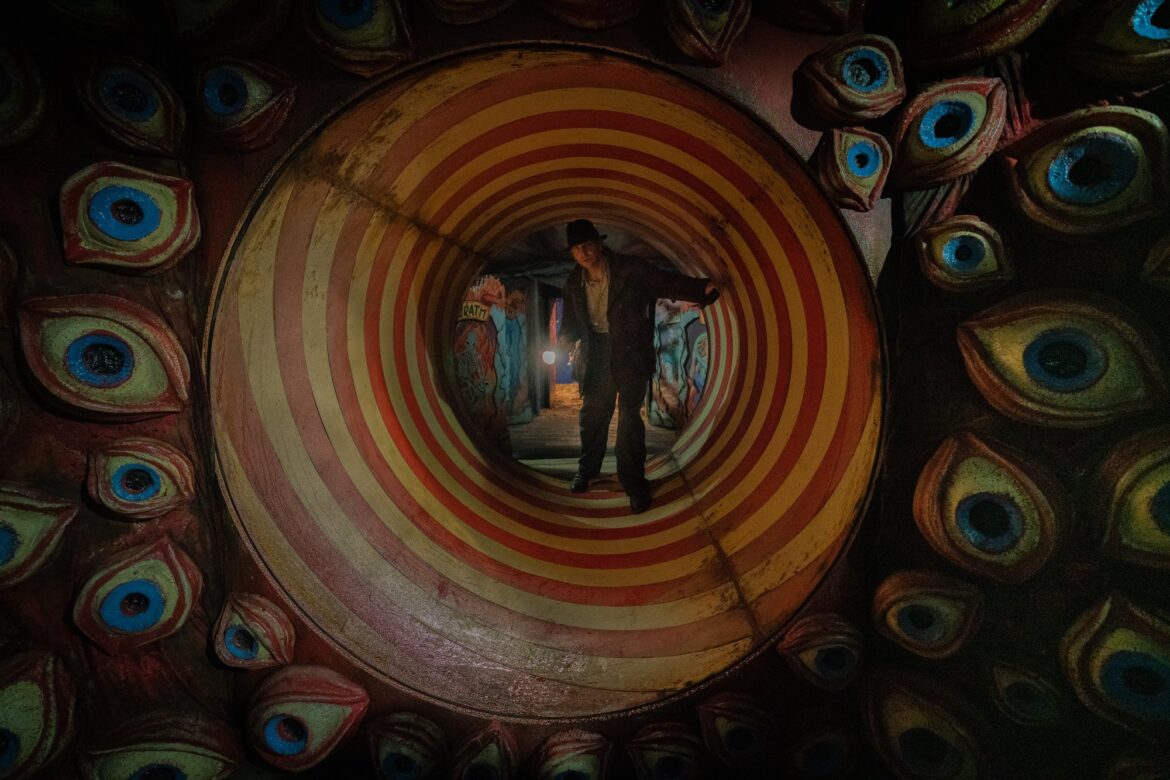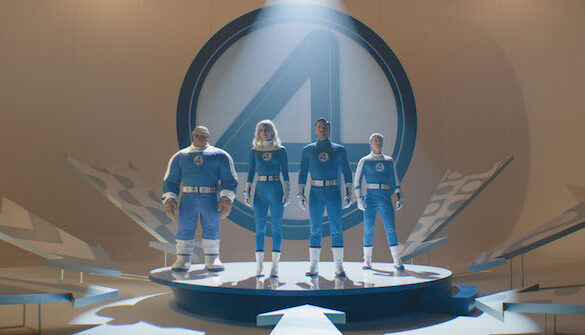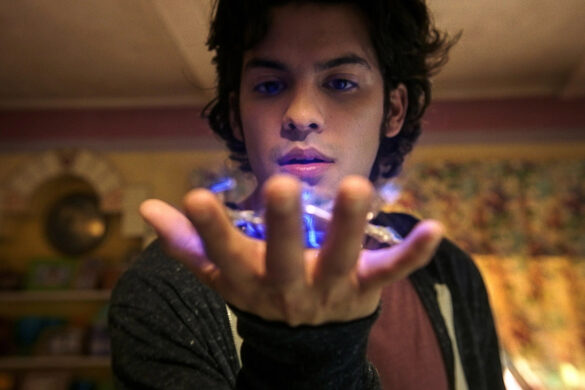Guillermo del Toro has ways of finding humanity within the flawed characters inhabiting the strange and supernatural spaces. For the past 11 films of his visually striking career, he’s taken audiences to these beautiful gothic-inspired worlds. But with “Nightmare Alley,” the director takes a turn to the noir and celebrates everything the style had to offer by exploring themes of greed, pride, envy, and emotional manipulation through the lens of the outcasts and misfits of the 1940s. Based on William Lindsay Gresham’s novel of the same name, it reveals itself to be much more than a carnival act. Instead, it’s a slow-burning mystery thrill that could have benefited from some trimming.
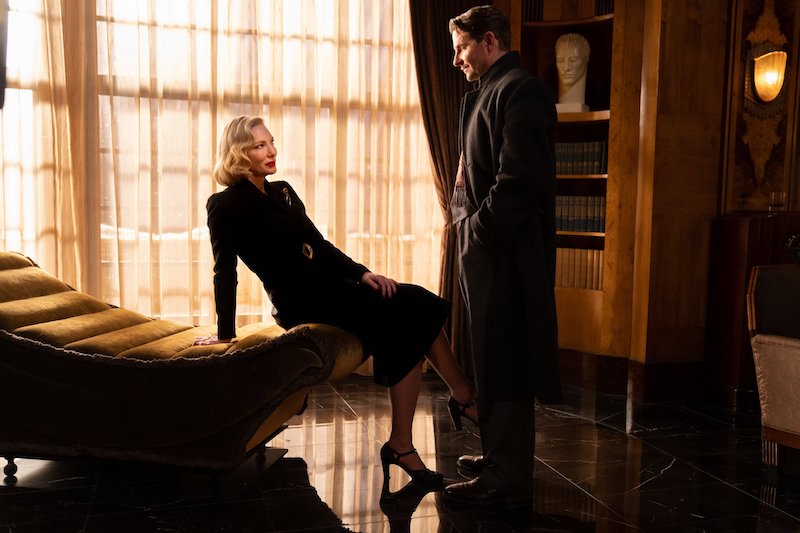
Set in the 1940s, the film follows Stan Carlisle (Bradley Cooper), an ambitious but down-on-his-luck con artist who stumbles upon a small-town carnival. He becomes interested in learning the art of manipulation through keen observation. However, most of the carnies do not fall for his charming demeanor. The only one is a naive Molly Cahill (Rooney Mara). Together, they break away from the safe confines of the carnival and make the big time by taking Stan’s show to Chicago, where they perform in front of wealthy socialites on a nightly basis.
But the act soon catches the attention of those who seek to find closure with the loved ones they lost, including Ezra Grindle (Richard Jenkins). Seeing how he can profit from Grindle’s emotional pains, Stan hatches a plan to swindle Ezra of his fortune with skeptical psychiatrist Dr. Lilith Ritter (Cate Blanchett). However, she’s just as much of a manipulator as Stan is, maybe even better. Soon, a game of trust and deception begins to unravel at the seams.
As much as Del Toro loves his misunderstood creatures, “Nightmare Alley” takes a more humanistic approach to reveal the monsters within humans. All of the strongmen, hawkers and extrasensory characters that make up the cast of misfits in that carnival are content with their current lifestyle and do not need excess or greed that a lavish lifestyle can offer them. Unfortunately, Stan has a much different perspective, as he takes every opportunity to climb the ladder by emotional manipulation and scheme hatchery.
The first half of “Nightmare Alley” spends much of its time acquainting us with Stan as Stan hones his mind-reading craft. He learns the art of it through the help of Zeena (Toni Collette) and Pete (David Strathairn), a married couple with a perfected code of keywords and phrases that would coax any carnival guest into believing their act. If successful, they could get the crowd to pay more cash. It’s an act that works, but only if they do not take it too far by turning it into a Spook Show. As such, Del Toro plants the seeds that would eventually become Stan’s undoing.
During that time, Stan learns about the inner workings of the carnival, including the performers and their acts, all of which help keep the lights on and food in their bellies. It is a communal effort that should keep everyone happy to know they have a roof over their heads. But, of course, the film doesn’t avoid the fact that some apparent inequities exist. One of these acts sees Clem Hoately (Willem Dafoe) strip lowly performers – or geeks in carnie terms – of their humanity by having them bite the heads off of live chickens in front of a paying audience.
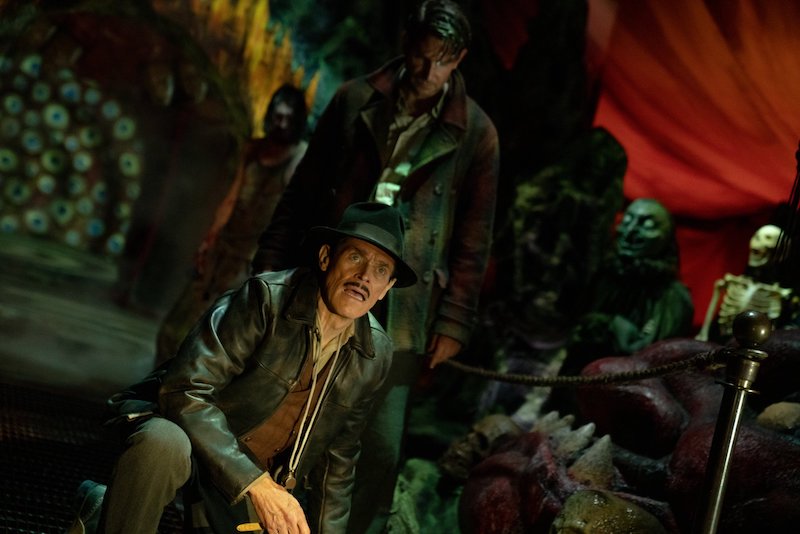
And as unbelievable as the carnival world is, as Stan and Molly take their act to the big city, it becomes darker yet still very alluring. The second half trades the warm glows set against the grungy backgrounds of a small carnival for something darker and more sinister lurking within the comfort and safety of a big-time flashy city. And it is there that we are introduced to Cate Blanchett’s Dr. Lilith Ritter, a psychiatrist who is skeptical of Stan’s act. But, just like him, she watches and observes his every movement and gesture, waiting for the opportune time to expose him as a fraud.
Knowing the truth, Dr. Ritter also wants in on the hustle and even provides key marks that could make them both very rich. Of course, when Stan gets a first-hand look at her office, there is no way he could pass that up. But, again, a lot of that has to do with not only the production design but also the lighting. Here, the library, retro recording station, and even furniture exude a lavish lifestyle can lure Stan is like a devilish fiend.
So “Nightmare Alley” steers itself from establishing Stan’s character as a man with a lack of a moral compass and focuses more on the red flags that signal his downfall. As much fun as it is to see Stan and Dr. Ritter engage in a battle of wits, the film drags because of a lack of urgency. The deliberate slow pacing is fine and adds to the meat of the Stan and Dr. Ritter dynamic. We already know that Stan is a depraved man capable of doing horrible things and that it is only a matter of time before he starts to fall for his own con. It’s just how everything unravels when set against all of the exquisite and gorgeous set pieces.
The beauty of those technical aspects is where production designer Tamara Deverell and cinematographer Dan Laustsen’s works genuinely shine. The cohesiveness between the two pieces of art turns each setting into a character that’s full of life. Not only does it establish the power and social dynamics, but it also helps with the character developments for Stan and Molly, with each one of them wanting to leave or stay in the respective worlds they call home.
And the rest of the cast does a terrific job with the material they are given. Collette and Stratham are standouts as a married couple who use their ingenious code to make it appear that Zeena has extraordinary mental powers. Their presence provides a nice contrast to Stan’s ambitions and lack of morals, although they are not without their flaws. They themselves recognize flaws that do not let define who they are as people.
And Jenkins does a splendid job as Ezra Grindle, who may be keeping his own secrets as to why he is desperately looking for closure. But, if anything, Mara’s Molly feels somewhat underutilized as a woman caught between two worlds and forced to make a life-changing decision.
Despite some of its flaws from the underdeveloped characters and excessive runtime, “Nightmare Alley” is a dark neo-noir that isn’t short on thrills and builds upon itself to create something that’s simply intoxicating. The characters are fascinating to watch. There are multiple layers to Stan and Dr. Ritter. Though both are playing a dangerous game, it would seem that Stan is entirely out of his depth, and Dr. Ritter holds all of the cards. And their trajectory is terrific to watch the moment the two lay eyes on each other. Of course, it also helps to have a great understanding of the technical aspects and an equally great team that make these worlds so hypnotizing. If anything, Del Toro crafts this great love letter to the golden age of neo-noir and uses the right words and technical usage to woo us into two worlds that are warm and comforting, and cold and tragic all at once.
8.5/10

